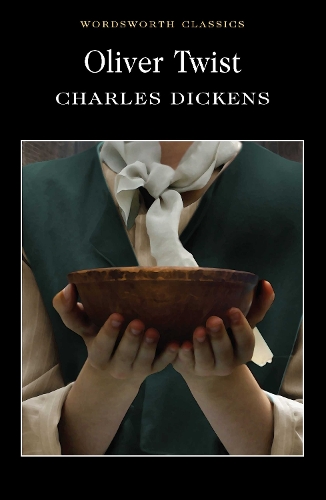
Oliver Twist
(Paperback)
Available Formats
Paperback, Illustrated edition
Published: 1st March 2020
Paperback
Published: 30th June 2008
Hardback
Published: 29th January 2018
Hardback
Published: 31st May 2018
Hardback
Published: 1st February 2014
Paperback
Published: 23rd May 2012
Hardback
Published: 13th September 2016
Hardback
Published: 1st August 2011
Paperback
Published: 16th February 2021
Paperback
Published: 1st November 2008
Paperback
Published: 18th September 2014
Paperback
Published: 15th May 2005
Paperback
Published: 23rd February 2004
Paperback
Published: 3rd September 2007
Paperback
Published: 1st August 2013
Paperback, Enriched Classic
Published: 13th September 2007
Hardback
Published: 20th November 2012
Paperback
Published: 6th November 2014
Paperback
Published: 23rd July 2018
Paperback
Published: 15th October 2001
Publishing Details
Oliver Twist
By (Author) Charles Dickens
Illustrated by George Cruickshank
Introduction and notes by Dr Ella Westland
Series edited by Dr Keith Carabine
Wordsworth Editions Ltd
Wordsworth Editions Ltd
5th May 1992
5th May 1992
United Kingdom
Classifications
Physical Properties
Paperback
400
Width 129mm, Height 198mm, Spine 20mm
250g
Description
Dickens had already achieved renown with 'The Pickwick Papers'. With 'Oliver Twist' his reputation was enhanced and strengthened. The novel contains many classic Dickensian themes - grinding poverty, desperation, fear, temptation and the eventual triumph of good in the face of great adversity. 'Oliver Twist' features some of the author's most enduring characters, such as Oliver himself (who dares to ask for more), the tyrannical Bumble, the diabolical Fagin, the menacing Bill Sikes, Nancy and 'the Artful Dodger'. For any reader wishing to delve into the works of the great Victorian literary colossus, 'Oliver Twist' is, without doubt, an essential title. AUTHOR Charles John Huffam Dickens FRSA (7 February 1812 9 June 1870), pen-name "Boz", was the most popular English novelist of the Victorian era and one of the most popular of all time. He created some of literature's most memorable characters. His novels and short stories have never gone out of print. A concern with what he saw as the pressing need for social reform is a theme that runs throughout his work. Much of his work first appeared in periodicals and magazines in serialised form, a favoured way of publishing fiction at the time. Dickens, unlike others who would complete entire novels before serial publication commenced, often wrote his in parts, in the order in which they were meant to appear. The practice lent his stories a particular rhythm, punctuated by one cliff-hanger after another to keep the public eager for the next instalment.
